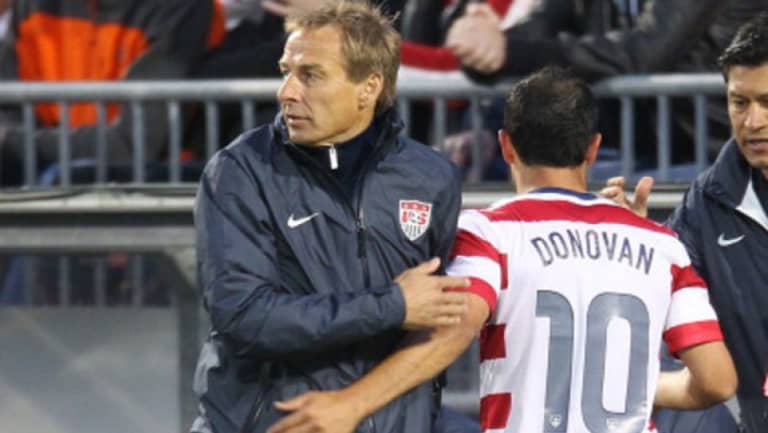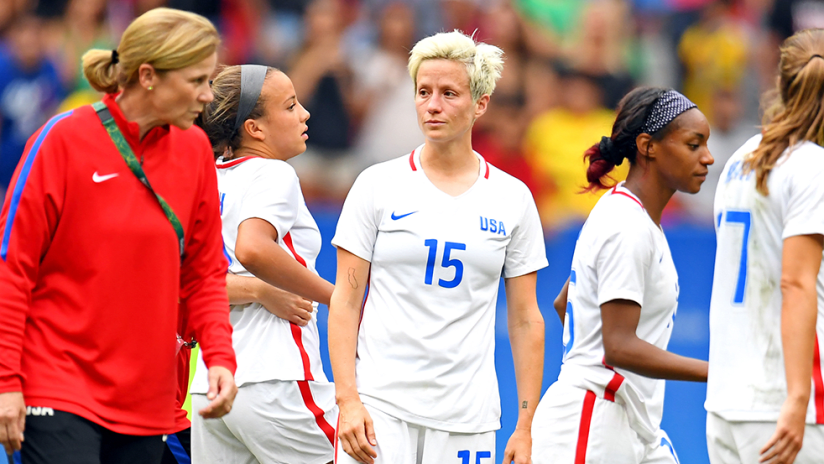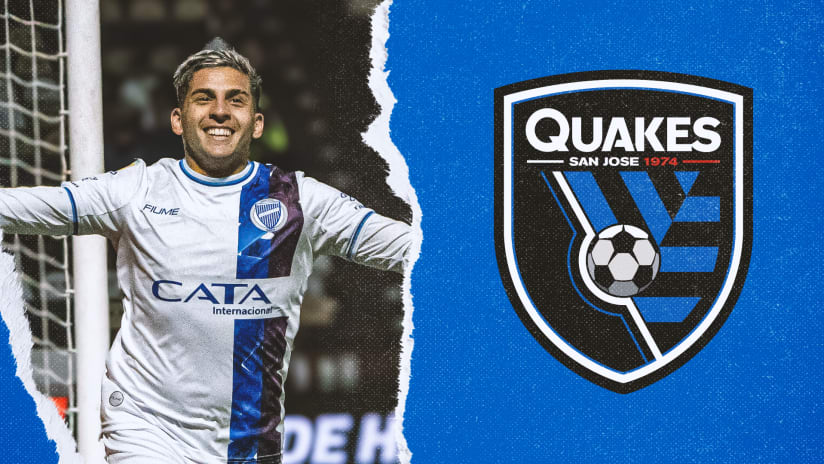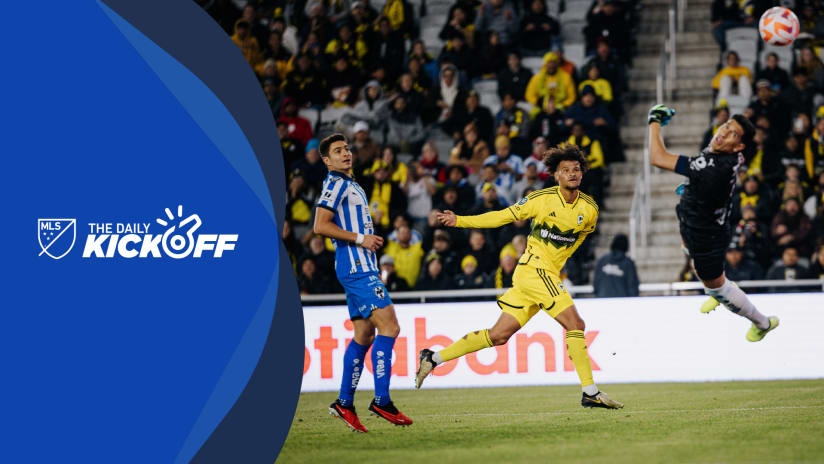Unity in competitiveness. Respect for experience and past contributions, and a measured approach to new blood. Above all, a relentless, keening hunger for winning.
Those ideas all characterize the distinct team culture of the US women's national team over a quarter-century of success on the international stage. They've also helped power the program to new heights even as much of the rest of the world has slowly but surely warmed to the women's game.
Legends have been made and moved along while fresh faces have risen. Yet the traditions endured, passed along from generation to generation.
But the USWNT crashed headlong into the limitations of those traditions in Brazil's capital city on Friday afternoon.
Comparisons between the men's and women's national teams – and the women's and men's games in general – are tricky and treacherous, and often counter-productive. But you can learn a lot about both teams by contrasting how each one's coaches handled their biggest recent roster decisions, for the 2014 World Cup (USMNT) and 2016 Olympics (USWNT), both hosted in Brazil.
Jurgen Klinsmann, as most will surely remember, suddenly moved up the USMNT's announcement of their final tournament roster to reveal that the iconic Landon Donovanhad been dropped thanks to an ebb in form. (Let's be honest, a checkered history with the coach surely didn't help, either.)

This year, USWNT head coach Jill Ellis' toughest call for her 18-women Olympic roster revolved around Megan Rapinoe. The veteran winger had torn the ACL in her right knee in a training session on the team's ill-fated December exhibition trip to Hawaii, for a friendly that never took place due to unsafe artificial turf at Aloha Stadium. She was racing against time to heal and regain her fitness in time for the Olympics.
With such a small roster for such a compressed, demanding tournament, the import of this decision was amplified. The safe option was to take veteran winger Heather O'Reilly, a tireless, end-to-end worker. But the magic in Rapinoe's boots is rarer, and ultimately Ellis chose to roll the dice on her star, while taking O'Reilly as an alternate.
USMNT fans could argue from here to eternity about what might have been with Donovan. Would he have conjured up a late winner against Belgium? Who knows. Certainly that team could have used some attacking inspiration in that game, and at other moments on their World Cup adventure. But Klinsmann made his call, and made a statement in the process.
Ellis, on the other hand, gave Rapinoe the benefit of the doubt – not only because of the latter's abilities, but because of who she is. Thanks to her past heroics and effervescent personality, she is a hallowed member of the USWNT's proud sisterhood of winning soccer. She earned that place, the logic goes, if not this year, then by nearly a decade of sterling service.
In the wake of Friday's crushing quarterfinal PK-shootout loss to Sweden (watch highlights here), it's hard to avoid the conclusion that the gamble backfired. As good as Rapinoe is, she was just barely fit enough to take part in this tournament. She started and played just 30 minutes (per the coaching staff's prior plans) against Colombia, then came off the bench vs. Sweden as the USWNT chased the game down 1-0.

When Rapinoe ran out of gas early in extra time, Ellis had to burn a sub on a sub – which you could argue was worth the risk. But it ended up as just one more factor working against the US on a day when everything that could possibly have gone wrong, did.
Veterans have always been granted respect in the USWNT camp, because they've usually paid their dues, won trophies, and thus can be counted on to shoulder heavy loads. But too many of them failed to do so on Friday, even taking Sweden's impressive display into account.
Alex Morgan scored the equalizer, but put just two of her seven shots on frame and set the tone for the shootout by failing to convert the first US PK. Reigning FIFA World Player of the Year Carli Lloyd – around whom the team's current formation has been built – proved anonymous for long stretches and took five shots, none of them testing excellent Swedish goalkeeper Hedvig Lindahl. (The USWNT took a whopping 26 total shots, only five of them on target.)
Even rock-solid center back Becky Sauerbrunn slipped up, a truly rare occasion that was harshly punished in the form of Sweden's goal. Goalkeeper Hope Solo would certainly want that one back as well, to say nothing of her post-game comments. (For those wondering why the program has kept faith with Solo through all her many off-field missteps and controversies: It's that team culture again.)
And then there's Ellis, too. There's fierce irony in the fact that the USWNT's current coach, who has spoken at length of playing more sophisticated soccer, was out-maneuvered by their former one. Current Sweden boss Pia Sundhage, after all, was known for direct, attritional tactics during her time in charge of the USWNT.

On Friday, the team's least experienced contributors were the most fearless, the most dynamic, among them young wingers Mallory Pugh and Crystal Dunn, center mid Morgan Brian. Even Lindsey Horan, given just six minutes in the run of play before being asked to dispatch a PK in the shootout, did her part. In this time of bitterness and heartbreak, USWNT fans can find hope in that.
Will that enshrined team culture allow a youth movement to blossom, even if it nudges some of the elders to the side? That's one question among many as the program moves into a two-year down cycle before the run-up to the 2019 World Cup.














